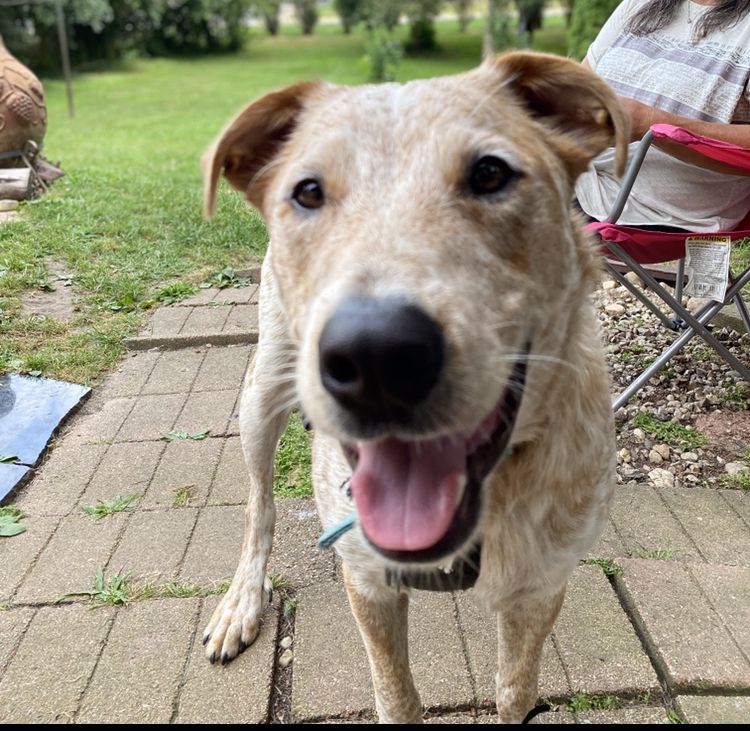
Red heelers can be either speckled or mottled.

Since blue heelers are covered extensively elsewhere, we only focus on the red color. ColorsĪustralian Cattle Dogs come in two different colors and five patterns. Australian Cattle Dogs have adapted well to both extreme heat and frigid conditions. The ACD has mild breeches on the hind legs and longer hair on the abdomen. The undercoat is soft and forms an insulating layer.

Its fur is usually one to one-and-a-half inches long. Its outer guard hairs are closely packed, straight, short, stiff, and flat-lying. The ACD has a unique, rain-resistant, dual coat. Australian Cattle Dogs inherited brush tails from the dingo. It has a deep and broad chest, level topline, and long sloping croup. An ACD is slightly longer than it is tall with a length: height ratio of 9: 1. The pastern is the area between the front paw and wrist and the section between the hindfoot and the hock. Australian Cattle Dogs look nimble and have flexible pasterns. Its power comes from a muscular frame that should not come across as heavy or bulky. An Australian Cattle Dog has medium bone substance. The shoulders are sloping, and the haunches are broad. Like the rest of the body, the Australian Cattle Dog’s neck is medium in length with a lot of power. The eyes are medium-sized and oval-shaped. The ears are medium or relatively small, each with a broad base and pointed tip. An ACD has high, muscular cheekbones that are not prominent and strong jaws. The breed has a balanced head that is broad and slightly domed between the ears and has a slight stop (break between the brow and bridge of the nose). AppearanceĪustralian Cattle Dogs are medium-sized dogs ranging from 17 to 20 inches tall and weighing 35 to 50 pounds. Most present-day Australian Cattle Dogs can trace their heritage to Little Logic and his most promising son, Logic Return. Queensland’s Heelers was a term that developed in the 1950s from a line of show dogs that gained renown and success from a Hall’s Heeler, Little Logic. This would complicate their legitimacy and eventual acceptance by the American Kennel Club in 1980. However, GSD, Kelpie, and Dalmatian blood, as well as an Australian sighthound (Kangaroo Hound), would feature later in the ancestry of Australian Cattle Dogs exported to the US. Although Kaleski asserted Dalmatian and Kelpie infusions influenced the breed, his claims were never proven for the original ACD lines. Robert Kaleski formulated an official breed standard in 1903.

Some red puppies appeared as throwbacks to the dingo shortly after the breed’s creation. Hall had produced a successful cattle dog adaptable to the arid heat, slate-hard ground, and grueling miles of Australian life by 1832. These dogs were blue, created from specially selected, blue-colored English drovers. Thompson Simpson Hall created the first Australian Cattle Dogs, called Hall’s Heelers, by crossing English Curs with Australian dingoes. These Old English Sheepdog-type Cur imports lacked the sturdiness and stamina for the land down under and its semi-wild and feral cattle. The Australian Cattle Dog was born out of the English Drover Cur’s unsuitability for the native terrain and livestock. You are more likely to run across blue heelers in text and among breeders than reds which are a little less common. Since the ACD was bred to drive and herd cattle from behind, sometimes nipping at their ankles, it gained the moniker heeler. The red heeler is not a breed but a color variant of the Australian Cattle Dog. It is affectionate, has great potential as a pal for other dogs, and provides protection. A red heeler dog is a dedicated and loyal worker that comes in a compact package. If you are an active person who enjoys a challenge, a red heeler is possibly the ideal type of dog for you. Red Heeler Puppies for Sale: Resilient Worker Turned Companion


 0 kommentar(er)
0 kommentar(er)
